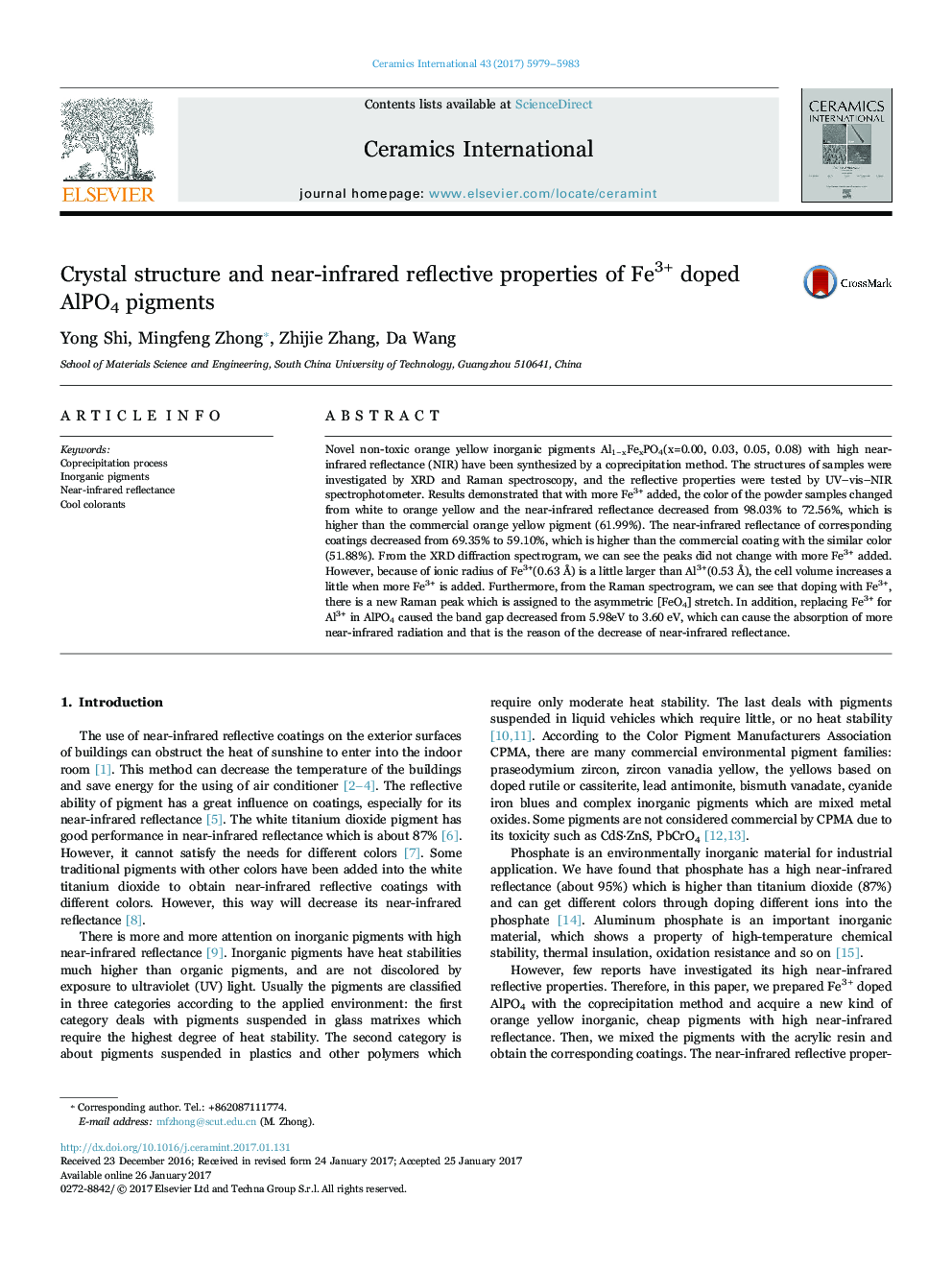| Article ID | Journal | Published Year | Pages | File Type |
|---|---|---|---|---|
| 5438430 | Ceramics International | 2017 | 5 Pages |
Abstract
Novel non-toxic orange yellow inorganic pigments Al1âxFexPO4(x=0.00, 0.03, 0.05, 0.08) with high near-infrared reflectance (NIR) have been synthesized by a coprecipitation method. The structures of samples were investigated by XRD and Raman spectroscopy, and the reflective properties were tested by UV-vis-NIR spectrophotometer. Results demonstrated that with more Fe3+ added, the color of the powder samples changed from white to orange yellow and the near-infrared reflectance decreased from 98.03% to 72.56%, which is higher than the commercial orange yellow pigment (61.99%). The near-infrared reflectance of corresponding coatings decreased from 69.35% to 59.10%, which is higher than the commercial coating with the similar color (51.88%). From the XRD diffraction spectrogram, we can see the peaks did not change with more Fe3+ added. However, because of ionic radius of Fe3+(0.63Â Ã
) is a little larger than Al3+(0.53Â Ã
), the cell volume increases a little when more Fe3+ is added. Furthermore, from the Raman spectrogram, we can see that doping with Fe3+, there is a new Raman peak which is assigned to the asymmetric [FeO4] stretch. In addition, replacing Fe3+ for Al3+ in AlPO4 caused the band gap decreased from 5.98eV to 3.60Â eV, which can cause the absorption of more near-infrared radiation and that is the reason of the decrease of near-infrared reflectance.
Related Topics
Physical Sciences and Engineering
Materials Science
Ceramics and Composites
Authors
Yong Shi, Mingfeng Zhong, Zhijie Zhang, Da Wang,
